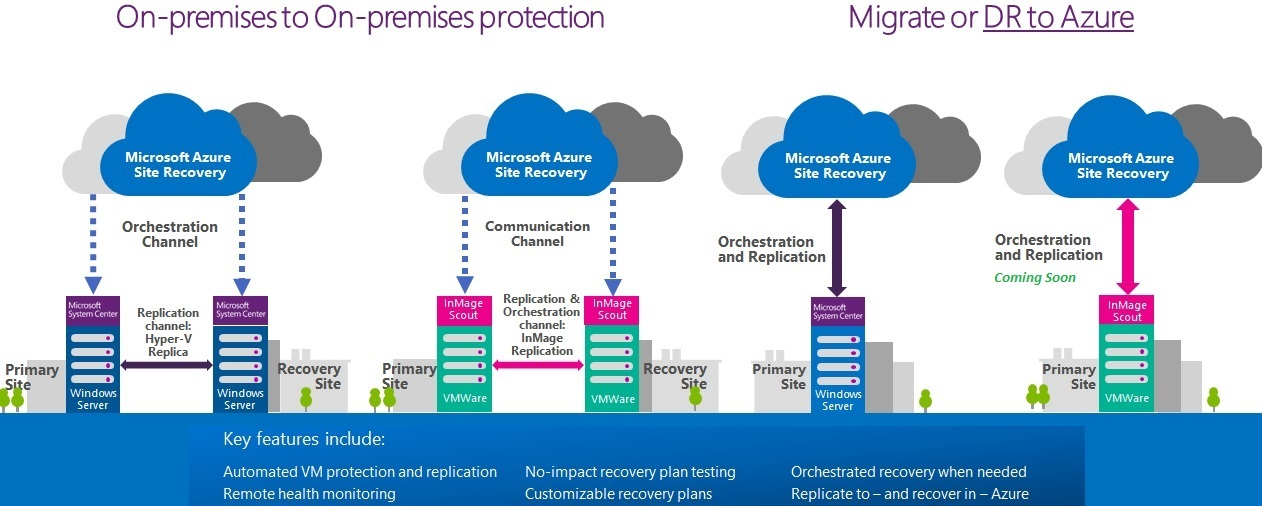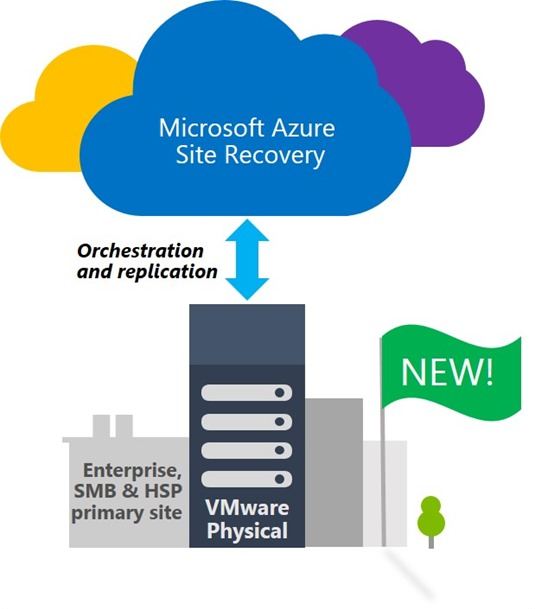
In today’s digital landscape, ensuring business continuity is critical and Azure for Disaster Recovery offers an enterprise-grade solution to meet that need. With increasing options for remote recovery and cloud-based failover, more organizations are turning to Infrastructure as a Service (IaaS) solution to keep operations running during outages.
Microsoft Azure leads the way with robust disaster recovery offerings, making it a go-to choice for businesses aiming to protect applications, systems, and data. One of the most effective tools under its belt is Azure Site Recovery (ASR)—a native Disaster Recovery as a Service (DRaaS) designed to minimize downtime and data loss.
This blog explores the benefits, features, and functionality of using Azure for disaster recovery, offering insights into how enterprises can leverage the platform for seamless business continuity.
What is Azure Site Recovery?
Azure Site Recovery (ASR) is a Microsoft service that ensures disaster recovery for Azure applications and on-premises infrastructure. It replicates workloads running on both physical and virtual machines (VMs) to a secondary Azure region, ensuring access to your apps even during an outage.
How It Works:
- Replication: ASR replicates workloads from a primary site to a secondary Azure region.
- Failover: During an outage, workloads can be failed over to the replicated site with minimal disruption.
- Failback: Once the primary infrastructure is restored, workloads can be moved back seamlessly.
Know More About Our Microsoft 365 and Consulting Services
ASR also enables testing of recovery plans without affecting production environments, making it a secure, efficient disaster recovery strategy.
Why Use Azure For Disaster Recovery
The Azure Site Recovery service is an ideal and cost-effective solution to your disaster recovery strategy. It helps you execute disaster recovery by managing replication, complete failover, and failback of both on-premises as well as Azure virtual machines (VMs).
There are several benefits of using Disaster recovery on Azure such as-
Easy to deploy and manage
Azure site recovery is extremely easy to set up and manage. All you need to do is replicate an Azure VM to a different Azure region. You can do this directly from the Azure portal.
Once done, site recovery is automatically updated with new Azure features as and when they’re released.

Savings on infrastructure costs
Using Azure, you can reduce the cost of deploying, monitoring, and maintaining on-premises disaster recovery infrastructure. Azure makes it possible by-
-Eliminating the need to maintain a costly secondary data center
-Reducing the expenses as you only have to spend in resources needed to support the applications in Azure
Robust security and data protection
Disaster recovery on Azure allows businesses to revolutionize their disaster recovery offerings. It helps you achieve your business goals for both compliances as well as continuity. You can now easily secure your data with robust protection offered by the encryption features of Azure.
Dependable recovery with minimum downtime
Disaster recovery on Azure is extremely dependable as it complies with all industry regulations such as ‘ISO 27001’. Azure also allows you to scale coverage to any number of business-critical applications. With Azure, you can restore your most recent data easily with Site Recovery.
Allows you to perform tests any time
Disasters never come with a warning, thus making it necessary to be prepared beforehand. Disaster recovery on Azure allows you to test your business continuity plans whenever required without impacting users. This offers a certain level of comfort to the businesses and directly influence the company’s ability to generate revenue.
Is Azure Site Recovery Safe To Use?
Backed by Microsoft, Azure Site Recovery enjoys a 99.9 percent service level agreement from Microsoft along with 24×7 support for running operations smoothly.
Additionally, Microsoft provides various QuickStart procedures and tutorials to assist IT administrators on how to replicate, manage failover, and configure their business disaster recovery mechanisms.
Conclusion
Azure for Disaster Recovery is a resilient and cost-effective approach to ensuring business continuity in today’s cloud-driven world. With scalable infrastructure, high-level security, and easy integration, it’s the ideal platform for maintaining uptime and protecting critical applications.
Whether you’re replicating on-premises workloads or cloud-native services, disaster recovery for Azure applications using ASR provides peace of mind and long-term savings.
At TrnDigital, we help organizations implement best-in-class disaster recovery strategies using Azure. From planning to deployment and ongoing management, we ensure your systems remain protected and your business uninterrupted.
FAQs
-
What is Azure Site Recovery used for?
Azure Site Recovery is a DRaaS solution that helps replicate and recover workloads running in on-premises or Azure environments during outages.
-
Is Azure good for disaster recovery?
Yes, Azure for disaster recovery offers scalable, secure, and cost-effective capabilities backed by Microsoft’s global infrastructure.
-
Can Azure Site Recovery be used for physical servers?
Yes, ASR supports replication of both physical and virtual servers to Azure.
-
Does ASR impact production workloads during testing?
No, ASR allows you to test failover scenarios without disrupting your live environment.
-
How much does disaster recovery on Azure cost?
Costs vary based on data size, region, and usage but you only pay for storage and compute resources during an outage or test, with no upfront fees.




